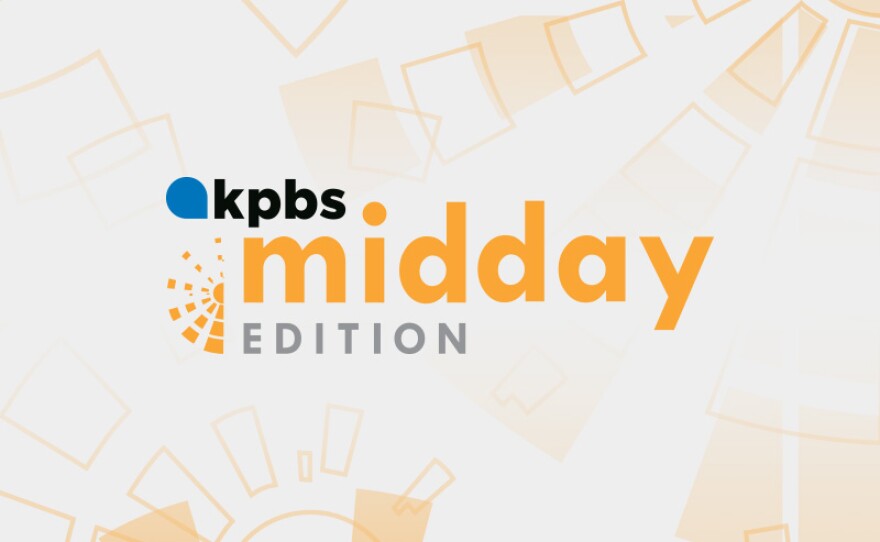Report: 30 Cities See Increase In Hate Crime While San Diego Remains Steady
Speaker 1: 00:00 A new report from the center for the study of hate and extremism at California State University. San Bernardino shows hate crime is up in 30 cities across the country here to talk about what's driving it and how it can be stopped. His director, Brian Blevin. Brian, welcome. Speaker 2: 00:17 Thank you so much for having me. Jade. Speaker 1: 00:19 So we know there's been a steady increase in hate crime, but what did this recent report reveal? How big is the increase in, how was how to San Diego a factor into all that? Speaker 2: 00:29 Well, San Diego bucked the trend. It was unchanged with with 41 hate crimes lives. Let's just a concert in San Diego just for a second cause it's a city that we look at quite a bit. Race or ethnicity. We're responsible for 22 of the hate crimes who San Diego followed by sexual orientation at 14 and anti-religion at six and again, San Diego, interestingly enough, was flat. We fled to pretty much the rest of the state because California as a whole in 2018 was actually down slightly. But the attorney general's numbers, I don't really capture some of the outlying areas that haven't been participating enough. And it also did not include three homicides or which took place in Orange County and La County. Now nationally, this 9% increase, again, deepest rise since 2015 and if it translates into the FBI's national data, which it may not, I think the trend May, but not necessarily the, the rate of increase. If it did though, and we're not saying it is, but if it did, it would be the worst year since 2001 which was a record year for hate crime. Obviously the terror attacks Speaker 1: 01:43 just this past weekend, the mass shooting in Gilroy that left three people dead and it doesn't injured, may have been connected to white supremacy. That report says that while told the total number of extremist homicides decreased, a white supremacist homicides increased. Can you explain that? Speaker 2: 02:00 Yeah, absolutely. We saw a cratering, uh, in violent Salafist Jihad as killings. There was only one last year and it was by a young person who was a congregation who stabbed somebody. In the meantime, we saw white nationalists homicides and we specifically curate to those that are motivated not a crime by a white nationalists or white supremacists, but one is motivated by, it jumped from 13 in 2017 to 17 in 2018 and there were, there were, uh, about 22 homicides nationally. Interestingly enough, the majority of these homicides took place around election time. Uh, so, so that's something as well. And we had the worst act of antisemitic mass murder there was targeted to Jews leaving out nine 11, uh, uh, with, with respect to the, uh, the attack of tree of life. Even, even as we see hate crimes gets Muslims, instance go down. And even the, uh, the ADL in their study showed that, uh, antisemitic instance went down largely because of that 150, some odd, uh, bomb threats that took place from one to Salem. The violence associated with religion based hate crimes is still high. What do I mean? Even with the declines anti Muslim in 2017 nationally according to the FBI had more assaults and even with the decline in assault than he did in 2001 and antisemetic uh, even though ADL showed a decrease compared to our are increased, now they're decreasing includes incidents that aren't crimes. So there's a little bit of a difference there. But bottom line is we both have our studies show an increase in violence and that's something that's scary. Speaker 1: 03:46 You mentioned a divisive election season, you know, you predict this trend will continue. Why and how can it be stopped? Speaker 2: 03:55 We need leaders to tone it down and we've clearly seen, listen to this, when Bush spoke six days after nine 11, if Islamic senator DC about tolerance to people who harass Muslims should be ashamed themselves. He crimes dropped by two thirds the next day and two thirds of next year. However, when, when, uh, candidate Trump spoke about the Muslim ban proposal that month for anti Muslim hate crimes was the, was the third worst. You only have to go back to the nine 11 time. So I think we have to tone it down. And I think what we're seeing is flashing yellow whites, international conflicts, a polarized political season as well as demographic changes, particularly with young people. You're talking about. We had two 19 year olds in California who appear to be influenced by a, by hate on the Internet. So what we're seeing is even though hate groups have imploded, you're inspiring people because of the web presence. And there's a 24 hour hate rally and bookstore available on an on a mat, and we think that have influenced these younger people. Speaker 1: 04:57 I've been speaking with the director of the Center for the study of hate and extremism, Brian Levin. Brian, thank you so much for joining us, Speaker 2: 05:04 jade. Thank you.


